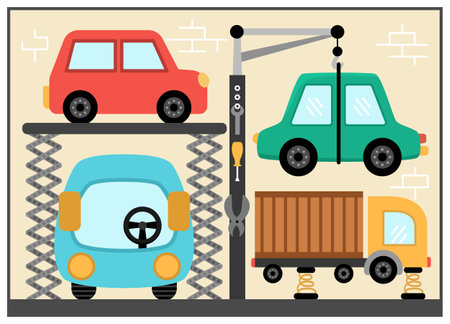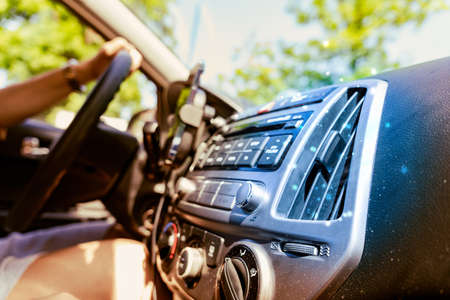Introduction: Navigating the Road Ahead
For first-time drivers in the UK, setting off on your own four wheels is a rite of passage—brimming with excitement and, naturally, a fair share of nerves. But before you map out your first road trip through the Lake District or plan that weekend camping escape to Cornwall, there’s one crucial decision that stands above all others: choosing the right car. Safety isn’t just a buzzword; it’s the foundation for building confidence behind the wheel and ensuring peace of mind for parents and new drivers alike.
The importance of picking a safe vehicle cannot be overstated—particularly in the UK, where unpredictable weather, winding country lanes, and bustling city traffic all play their part. British safety standards are among the most rigorous in Europe, shaped by organisations such as Euro NCAP and government-led initiatives. These bodies rigorously assess vehicles for crash protection, advanced driver-assistance systems (ADAS), and pedestrian safety, influencing what’s available on our forecourts. Understanding these ratings and recommendations can make all the difference as you set off on your motoring journey.
Understanding British Car Safety Ratings
When it comes to choosing the safest cars for first-time drivers in the UK, understanding local car safety ratings is absolutely essential. In Britain, one of the most trusted sources for vehicle safety assessments is Euro NCAP (European New Car Assessment Programme), which provides independent crash test results and safety ratings for most new vehicles sold across Europe, including the UK. These ratings play a significant role in guiding British buyers—especially parents and young drivers—towards safer choices on our roads.
How Euro NCAP Works
Euro NCAP evaluates vehicles across several categories, assigning star ratings that indicate overall safety performance. The main categories tested include:
| Category | Description |
|---|---|
| Adult Occupant Protection | Measures protection offered to adult passengers in front and side impacts. |
| Child Occupant Protection | Assesses how well children are safeguarded using standard child restraints. |
| Vulnerable Road Users | Focuses on pedestrian and cyclist impact protection. |
| Safety Assist Technologies | Evaluates active systems such as autonomous emergency braking (AEB) and lane-keeping assist. |
The Influence on Car Buying Choices in the UK
For British families and first-time drivers, Euro NCAP ratings have become a benchmark for evaluating vehicle safety. Insurers may offer lower premiums for vehicles with higher safety scores, making them more attractive to new motorists. Furthermore, many car dealerships in the UK prominently display these ratings to reassure buyers that their chosen car meets high standards of safety.
UK-Specific Considerations
While Euro NCAP provides a pan-European standard, British driving conditions—like narrow country lanes, frequent rain, and busy city traffic—make certain safety features particularly valuable. For example, technologies such as electronic stability control (ESC) and advanced driver assistance systems (ADAS) are highly recommended for those new to driving on UK roads.
A Quick Reference: What to Look For
| Feature | Why Its Important in the UK |
|---|---|
| AEB (Autonomous Emergency Braking) | Reduces risk of rear-end collisions common in stop-start British traffic. |
| LKA (Lane Keeping Assist) | Helps maintain lane discipline on winding rural roads and motorways. |
| TCS/ESC (Traction & Stability Control) | Essential for wet and slippery road conditions prevalent across the UK. |
| Pedesrian Detection Systems | Counters risks in urban areas with heavy foot traffic. |
By prioritising vehicles with high Euro NCAP ratings and advanced safety tech tailored to British conditions, first-time drivers can enjoy greater peace of mind as they embark on their motoring adventures around the UK’s diverse landscapes.

3. Key Safety Features to Consider
When it comes to choosing the safest car for first-time drivers in the UK, its not just about picking a vehicle with a five-star safety rating—its about understanding the essential safety technologies that make all the difference on British roads. Modern cars come equipped with a variety of advanced features designed to protect both the driver and passengers, as well as other road users. For those new to driving, these technologies are invaluable, providing an extra layer of reassurance and support during those early days behind the wheel.
Essential Safety Tech Every New Driver Needs
| Safety Feature | Description | Why It Matters for First-Time Drivers |
|---|---|---|
| Autonomous Emergency Braking (AEB) | Automatically applies the brakes if a collision is imminent and the driver hasnt reacted in time. | Reduces rear-end collisions and is especially helpful in stop-start city traffic or on country lanes. |
| Lane Keep Assist/Lane Departure Warning | Warns or gently steers the car back if it drifts out of its lane without signalling. | Helps prevent accidents caused by distraction or drowsiness, common among new drivers. |
| Adaptive Cruise Control | Keeps a safe distance from vehicles ahead by automatically adjusting your speed. | Makes motorway driving less stressful and helps maintain proper spacing at higher speeds. |
| Blind Spot Monitoring | Alerts the driver if there’s a vehicle in their blind spot when changing lanes. | Crucial for safe overtaking and merging, especially for those still mastering mirror checks. |
| Rear Parking Sensors/Camera | Aids with parking by giving audio-visual cues about obstacles behind the car. | Reduces the risk of low-speed bumps and scrapes, making parallel parking on busy UK streets easier. |
The Importance of Euro NCAP Ratings
The European New Car Assessment Programme (Euro NCAP) provides comprehensive safety ratings for vehicles sold in Britain. These ratings take into account crash test results and evaluate how well a car protects adults, children, and vulnerable road users such as pedestrians and cyclists. For first-time drivers, prioritising cars with high Euro NCAP scores ensures youre benefitting from robust structural integrity combined with effective active safety systems.
A Word on Insurance and Safety Tech
Many insurers in the UK recognise advanced safety features by offering lower premiums to cars fitted with them. So not only do you get peace of mind on your travels—from winding Scottish Highlands to bustling London streets—but you might also save some pounds each year. When shopping for your first car, be sure to ask about both standard and optional safety kit—sometimes paying a little extra upfront can pay dividends in long-term confidence and savings.
Top Safest Cars for New Drivers in the UK
Choosing your first car is a rite of passage, but safety should never take a back seat. In the UK, several models stand out for their robust safety features, reliable performance, and reasonable running costs—making them perfect companions for learner and newly-qualified drivers eager to hit the open road with confidence. Here’s a curated list of some of the most recommended cars, all backed by top British safety ratings and fitting well into the everyday life and budget of new motorists.
| Model | Euro NCAP Safety Rating | Key Safety Features | Average Price (Used) |
|---|---|---|---|
| Volkswagen Polo | 5 Stars | Automatic Emergency Braking, Lane Assist, Multiple Airbags | £8,000–£15,000 |
| Ford Fiesta | 5 Stars | Pre-Collision Assist, MyKey System, Stability Control | £7,000–£13,000 |
| Toyota Yaris | 5 Stars | Toyota Safety Sense Suite, Adaptive Cruise Control | £9,000–£16,000 |
| Hyundai i20 | 4 Stars | Lane Keep Assist, Autonomous Emergency Braking | £7,500–£12,500 |
| Kia Picanto | 4 Stars | Twin Front/Side Airbags, Hill Start Assist Control | £6,500–£11,000 |
| Renault Clio | 5 Stars | Active Emergency Braking, Traffic Sign Recognition | £8,000–£14,000 |
| Seat Ibiza | 5 Stars | Tiredness Recognition System, ESC & TCS as standard | £7,500–£13,500 |
The cars listed above combine high Euro NCAP ratings with practical features suited to British roads—think compact dimensions for city parking and responsive handling for winding country lanes. Most importantly, these models tend to be affordable to insure and maintain—crucial points when you’re just starting out behind the wheel. Whether you’re planning daily commutes or weekend camping escapes across the UK countryside, choosing one of these safe and reliable models means you can focus more on enjoying the journey and less on worrying about what’s around the next bend.
5. Running Costs and Insurance
When youre hitting the road for the first time, its not just safety features and crash test ratings that should be on your radar—running costs and insurance premiums are equally crucial, especially in the UK where these expenses can quickly add up for new drivers. Choosing a car with lower running costs doesn’t just mean saving on fuel; it also includes affordable insurance, manageable tax rates, and reasonable maintenance outlays. Let’s take a closer look at how your choice of car can make all the difference in your wallet.
Insurance Groups: What New Drivers Need to Know
Car insurance in Britain is categorised into groups (1-50), with lower numbers generally meaning cheaper premiums. For first-time drivers, sticking to cars in groups 1-10 usually results in more affordable insurance—a huge bonus when you’re just starting out and facing higher base premiums due to lack of experience. Popular safe picks like the Ford Fiesta, Vauxhall Corsa, and Volkswagen Polo often fall into these lower groups, making them perennial favourites among British learners and new licence holders.
Typical Running Costs Breakdown
| Car Model | Insurance Group | Road Tax (per year) | Average Fuel Economy (mpg) | Annual Maintenance Estimate (£) |
|---|---|---|---|---|
| Ford Fiesta 1.0 EcoBoost | 7 | £180 | 55 | £300-400 |
| Vauxhall Corsa 1.2 SE | 3 | £180 | 53 | £280-380 |
| Toyota Yaris Hybrid | 8 | £170 | 68 | £250-350 |
The Impact of Engine Size and Safety Tech on Costs
Bigger engines might offer more power, but they tend to push up insurance rates and reduce fuel efficiency—a double whammy for young drivers. On the flip side, cars fitted with advanced safety tech like automatic emergency braking or lane assist may qualify for insurance discounts, as insurers see these features as reducing accident risk.
Sensible Choices for Self-Sufficiency on the Road
If you’re planning weekend getaways or spontaneous camping trips across Britain’s national parks, reliability is key. Cars known for dependability—like the Toyota Yaris or Honda Jazz—not only keep ongoing maintenance costs down but also give peace of mind when exploring off the beaten track. In summary, balancing upfront price with long-term running costs and insurance can help ensure your early driving adventures are both affordable and stress-free.
6. Tips for Making the Right Choice
If you’re a first-time driver in the UK, choosing your first car can feel overwhelming—especially when safety is your top priority. Here’s some practical advice to help you navigate the process and make a choice you’ll feel confident about.
Test-Driving: What to Look For
Always take potential cars for a thorough test drive. Pay attention to visibility, comfort, ease of controls, and how the car handles on typical British roads (think narrow lanes, roundabouts, and speed bumps). Test both city driving and dual carriageway speeds if possible. Make sure all safety features—like ABS, lane assist, and airbags—are working properly.
Evaluating Second-Hand Cars
Many first-time drivers opt for used cars due to budget constraints. When looking at second-hand options:
- Check the MOT history via the official GOV.UK website to spot recurring issues.
- Request a full service history and ensure all scheduled maintenance has been carried out.
- Inspect for signs of previous accidents or rust, especially around wheel arches and undercarriage.
- Use a reputable mechanic or an AA/RAC vehicle inspection for peace of mind.
Trusted British Resources
| Resource | Description |
|---|---|
| Euro NCAP | The leading authority on car safety ratings in Europe; check their latest crash-test results. |
| Which? | An independent consumer group that reviews reliability, running costs, and owner satisfaction for UK models. |
| Parker’s & AutoTrader | Comprehensive listings for new and used cars, including running cost calculators and honest user reviews. |
Key Questions to Ask Before Buying
- What’s the car’s insurance group? Lower groups mean cheaper premiums for new drivers.
- Does it have modern safety tech like emergency braking or stability control?
- How expensive are routine repairs and parts in the UK?
A Final Word
Your first car is your ticket to freedom across Britain’s scenic routes and bustling towns. Take your time, use trusted British resources, and don’t hesitate to walk away if something feels off. Safe travels!
7. Conclusion: Hitting the Road Safely
Starting your motoring journey in the UK is an exciting step, and choosing the right car plays a pivotal role in making that journey both safe and enjoyable. With British safety ratings such as Euro NCAP and expert recommendations in mind, first-time drivers can confidently select a vehicle that not only fits their budget but also offers top-notch safety features. Remember to consider essentials like reliable brakes, advanced driver assistance systems, and robust build quality. Choosing from vehicles highly rated for safety ensures greater peace of mind—whether youre navigating city streets or venturing into the countryside for a weekend camping escape.
| Key Considerations | Why It Matters |
|---|---|
| Euro NCAP Rating | Offers an independent assessment of crash protection and technology. |
| Driver Assistance Features | Improves reaction time and accident avoidance (e.g., lane assist, AEB). |
| Affordability & Insurance Group | Keeps ongoing costs manageable for new drivers. |
| Visibility & Handling | Makes daily driving less stressful and more controlled. |
| Comfort & Practicality | Ensures longer trips—like road trips or camping—are enjoyable. |
Ultimately, arming yourself with knowledge about the safest cars and understanding what features matter most will help you make an informed decision. Whether it’s city commutes or heading off on your first self-drive adventure, prioritising safety means you’ll be able to hit the road with confidence. Here’s to safe travels and many memorable miles ahead on Britain’s diverse roads!


